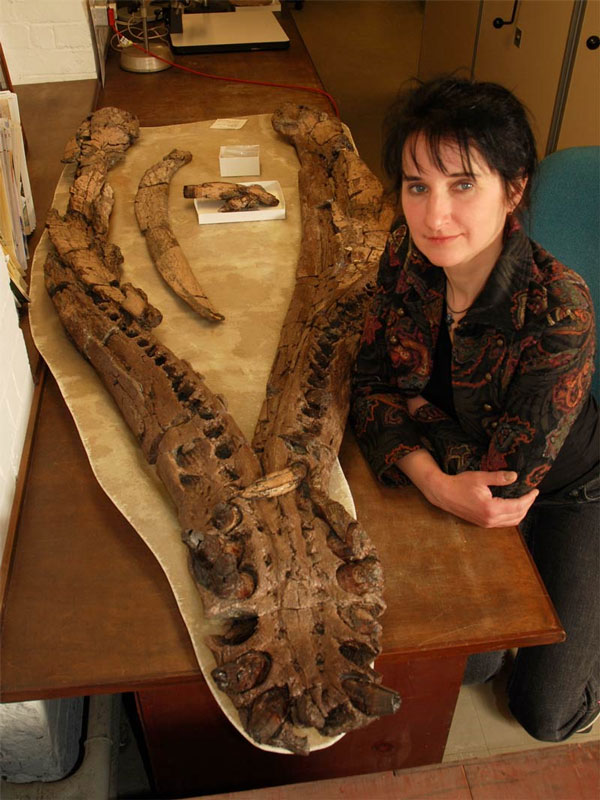What makes 'Loch Ness monster' die?
The death of a huge ancient creature, like the Loch Ness Lake Monster, seems to be related to jaw pain. This finding also reveals that even the most dangerous predators will eventually be unable to withstand the disease of old age.
Scientists draw this conclusion after conducting fossil analysis of the neck of an extinct giant marine reptile named Pliosaur, which was unearthed in 1994. The fossil is defined as a female's. about 8m long. The crocodile-like head is 3m long, the neck is short, the body is like whales and the four healthy flippers.

Judyth Sassoon on the fossil part of the jaw
of an ancient creature. (Source: Simon Powell)
Normally, with large jaws and 20cm long teeth, it can tear off any prey. However, paleontologists have found signs of a degenerative condition similar to human arthritis in this 150-million-year-old specimen. The aging process that begins to appear in Pliosaur's left jaw joints causes the lower jaw to deviate. It has been in pain for a long time.
'In the past, this phenomenon has never been seen in reptiles in the mid-life era , ' said Judyth Sassoon, a researcher from Bristol University.
The beast may have lived in the south of England and left when the water here was warm and the sea was more shallow. Pliosaur is like a Loch Ness monster not only in shape but also with food sources such as fish, shrimp, crabs, oysters and mussels.
Sassoon is currently studying Pliosaur species and hopes to better understand the diversity and habits as well as how they can adapt to such a huge size environment.
Reference: Livescience
- The image resembles the Loch Ness monster head
- Loch Ness Monster can be a giant eel
- Loch Ness lake monster suddenly appeared after 9 months missing?
- Hot: The mystery of Loch Ness lake monster has a solution
- New evidence of Loch Ness monster monster?
- Loch Ness monster monster objects head up on the lake
- Suspected Loch Ness monster disappeared
- Loch Ness lake monster may just be catfish
- Record 'monsters' like Loch Ness in the British Canal
- Shocking revelations about Loch Ness monster
- Research can prove real Loch Ness monsters are real
- Discover the hiding place of Loch Ness monster monster?
 The truth about the mysterious red-haired giant at Lovelock Cave
The truth about the mysterious red-haired giant at Lovelock Cave Inunaki Tunnel: The haunted road leading into Japan's 'village of death'
Inunaki Tunnel: The haunted road leading into Japan's 'village of death' The mystery of the phenomenon of human reflection before dying
The mystery of the phenomenon of human reflection before dying 6 mysterious phenomena, although science has been developed for a long time, still cannot be answered
6 mysterious phenomena, although science has been developed for a long time, still cannot be answered